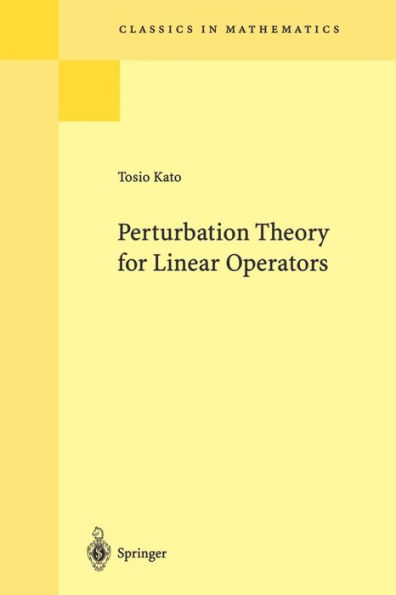5
1
9783540586616


Perturbation Theory for Linear Operators / Edition 2 available in Paperback

Perturbation Theory for Linear Operators / Edition 2
- ISBN-10:
- 354058661X
- ISBN-13:
- 9783540586616
- Pub. Date:
- 02/15/1995
- Publisher:
- Springer Berlin Heidelberg
- ISBN-10:
- 354058661X
- ISBN-13:
- 9783540586616
- Pub. Date:
- 02/15/1995
- Publisher:
- Springer Berlin Heidelberg
59.99
In Stock

Product Details
| ISBN-13: | 9783540586616 |
|---|---|
| Publisher: | Springer Berlin Heidelberg |
| Publication date: | 02/15/1995 |
| Series: | Classics in Mathematics , #132 |
| Edition description: | 2nd ed. 1995 |
| Pages: | 623 |
| Sales rank: | 600,578 |
| Product dimensions: | 6.10(w) x 9.25(h) x (d) |
About the Author
From the B&N Reads Blog
